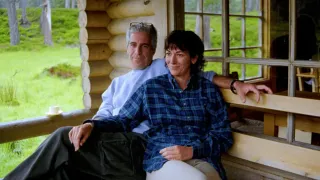June 16, 2015
From Real to 'Reel' :: Stu Maddux on His New Documentary
Kilian Melloy READ TIME: 10 MIN.
After completing "Gen Silent," his movie about the plight of GLBT elders all too often forced to retreat back into hiding by a care system prone to abuse them, documentary filmmaker Stu Maddux turned his lens on a whole new subject: The gay home movie.
When he started looking into vintage film of parties, travel, and other aspects of life captured by ordinary gay people living decades ago -- from the late 1930s into the 1990s and beyond -- Maddux discovered something remarkable about how the moving picture communicates history to us in a manner more vital than the written word or the still image.
Maddux also uncovered hidden troves of GLBT history caught on film in preserved raw news footage preserved by gay news station employees. The film he's assembled from these resources, titled "Reel in the Closet," feels like a important, fresh, and vital new chapter about the bad old days, the resilience and courage of our gay forebears, and the importance of maintaining an honest, inclusive record of the past.
Maddux found a few minutes recently to chat with EDGE about how the vintage film he brings back into the light shines a light in turn on how we view and understand GLBT history.
EDGE: I'll admit when you first described this project, I didn't really understand it. "Gay home movies?" I thought it would be interesting, but I wasn't sure what form it would take. But having seen the film, now I get it... which is the point, really. Seeing people and events on film makes those people and events much more real for the viewer, and much easier to understand and sympathize with. When and how did the idea for this project germinate for you?
Stu Maddux: I totally get what you mean. It turned out to be much more than gay family movie night. I read an article about a volunteer at The GLBT Historical Society in my home town here in San Francisco who was carefully transferring old home movies made by queer people. The more I looked at these old reels of film of real everyday people, the more I saw myself, my friends and my life -- only, back in 1950, 1940, even as far back as 1938.
These people look, act, and do the same things that we do today. As a gay man, that connection to a past was something I never felt before; and, it was so special that I wanted to make something that would offer others that feeling too.
EDGE: The film starts with a film student, Halima Lucas, talking to an older man about the early days of the GLBT civil rights movement, and he says to her, "I have films on a bit of this." It's a wonderful introduction to the idea of home movies and other footage that might have been stuck away from decades and how bringing it back out into the light now can inform us in ways no book or still photo could do. Was this staged to create this effect? Was it a fortuitous moment that you saw could set the stage for what the documentary is about?
Stu Maddux: It was... hmmm, how should I say it? -- "reenacted." We found a film student making a documentary about an older friend of mine. She had just finished it, so we asked her to reenact her interview with him.
This was actually kind of a crucial storyline that we struggled with often to get right. It was close to not making it in the film at all. But I wanted very much to make a film that people living the first third of their lives would find relevant. Films are most impacting when people see themselves. So how were we to take all this old footage and make something impacting to people who are under 25? Have a person under 25 digging into it. Show clips of people under 25 back in 1940.
EDGE: It's amazing to me -- and I don't know how many poeple would even have realized this -- but the Academy of Motion Picture Arts and Sciences has special collections that include GLBT film, and you talked to one of their curators, Lynn Kirste. Did you any inkling before starting this project that the people who hand out the Oscars had an interest in film relevant to LGBT history and culture?
Stu Maddux: That was amazing to me, too. I was reminded how much that even people who are in motion pictures make home movies. The same film that makes something very public is used to make something very intimate, too.
Many of those home movies from famous people make their way to The Academy as part of donations and some of those are from actors or filmmakers we now would think of as LGBT. But the untold story of AMPAS is that they care for and share films that are from regular, everyday people like us. I think some of the archivists there might say those films made by average people are some of the most interesting.
EDGE: Similarly, your film cites the Library of Congress as an archival resource. Does the Library of Congress have an extensive collection of GLBT home movies or other material on film?
Stu Maddux: Not extensive -- yet. One of the highlights of making this film -- and, actually, of my life -- has been visiting the Library of Congress Packard Campus for Audio-Visual Conservation. It's in a facility that was once a vault holding currency that would have been put into circulation to restart the economy after a nuclear attack.
Now it holds something much more precious to me personally: The sights and sounds of our culture in all its diversity on everything from Victrola recordings to movies to even video games. The archivists take very seriously their job of preserving all parts of American culture, and both its good and bad chapters. Like our nation as a whole, there is a catching up of the LGBT part of the pie. But I felt so proud that my government was actually doing something so meaningful. I mean, this is what you'd send into space when the meteor hits. It is us. All of us. And they work constantly to make that pie as well rounded as we are.
EDGE: At a couple of different points, the people you interview talk about how these films show that our GLBT forebears "rich and satisfying lives," and they weren't living furtively and in terror every minute of every day. This is essential information, because it colors our understanding of pre-Stonewall gay culture and gay existence in this country in a much different way than maybe we're used to.
But being that these are home movies -- they were made to document special occasions, and don't necessarily show people as their everyday selves -- I have to ask whether they might not have a little bit of what we now call the "Facebook effect," the tendency to put a much happier and carefree face on things than might actually be the case in reality.
Stu Maddux: I think you are right. And so it seems that the rarest of the rare LGBT home movies is when someone just shot everyday life. I remember historian Andy Ditzler saying in the film, "Those are the things that people don't think to shoot. And if they do, other people don't think to save." There is nothing more fascinating than seeing two people cook dinner in 1969. Of course the fascinating part for me is all the kitschy cookware and Shake N' Bake.
EDGE: I find it amazing that many of the same arguments, stereotypes, and tropes we're familiar with today were also in play decades ago. In one clip, two GLBT activists argue about gays acting "straight" for appearances' sake. In another clip, a black man makes the claim that legal and social equality for gays is not a matter of civil rights, a claim we hear even today from some members of the African American community who seem to feel we have "hijacked" the civil rights movement.
How is it we are still rehashing the same stuff after all this time? If we all watched more gay home movies, would we start to get out of these ruts because we'd realize we've been going over this for so long?
Stu Maddux: It certainly would go a long way to getting some much needed perspective about all the work that all of us have done for so long. We so, so shortchange ourselves by not having access to that gay marriage rally in 1982. Sure, we get to see what's changed, but what is most startling is what's not changed. Last week I saw a videotape of a rally from 1978. Someone was holding a sign that read, "No More Hate." For a split second, I thought it was a sign from 2008 that read, "No More H8te."
EDGE: At the same time, some of the footage preserved here contains examples of outstanding, really exceptional hatred aimed at our community -- Anita Bryant's crusade, for example, or a vulgarity-peppered on-camera rant from Fred Phelps (who then, evidently proud of himself, asks for a copy of the film). This sort of institutional memory strikes me as necessary, and efforts to preserve it seem crucial, because in a few decades -- if not right now -- people who have opposed our full equality are going to see this and hang their heads in shame.
Stu Maddux: When we focus grouped this film, there was a visceral reaction -- a negative reaction -- to having to watch such hatred and vitriol on a big screen, in your face. But to not show that clip because it was uncomfortable would dishonor all the people who actually lived through it.
I personally find it fascinating and hilarious and a must-see, even though I am one of those people who lived through it. It was so hate-filled that it never made it on the news in 1995, it never would make it on today. That's the power of this raw news footage that I also put under the umbrella of our big queer home movie. It was saved by a gay news editor who felt it was important. Had he not physically taken it home and kept it in a closet, It would have been erased after a week so the tape could be reused.
EDGE: One of the people you interview points out that back in the days of handheld 8 mm cameras -- and even in the early days of video -- having portable, personal units was expensive, so it was usually men, and white men at that, who were able to make these visual documents of their lives.
What does that tell us about home made film that documented earlier GLBT life experiences in this country? Given the level of anti-gay animus back then, did it make a huge difference if a gay man were white instead of a racial minority? Did it make a big difference to be a lesbian rather than a gay man? If we had a trove of gay Asian- or African-American film to examine, would we see a significantly different story?
Stu Maddux: Oh my God, I can't even. Just the chance of really seeing, not reading but seeing, what's different and what's the same has provoked me into turning my baby, my lovingly finished film, into what I call a "crowd work in progress." It's now all of our film. I've opened it up for more editing as people come forward with footage that shows diversity not yet in here.
My friends at the The Lesbian Home Movie Project will be upset if I don't point out that a month before the premiere I was flying to Maine to edit in some pretty amazing stuff of women there from the 1930-1970s. But that's just the tip of the queer home movie iceberg, if you ask me.
EDGE: That reminds me to ask you about the "Our Family Album" project you have linked to from your website. What is this? Is it something you started?
Stu Maddux: During my exploration of this topic, a lot of still photos seemed worthy of sharing as well. So, we have an online album that's growing as well, that people can contribute to. Some of the photos are mine, some are curated, but there is something different that happens when you take away a person's movement. There is much more ambiguity. And also, the farther back in time you go with still pictures the more we are judging a scene through our today goggles.
Two men holding hands today in Western culture means something very different than two men hold hands a hundred years ago or in other cultures. So, unless we know the story behind the photo, we don't make the call. We let the visitor do that. The discussion about how we today view past sexuality and gender is interesting.
EDGE: How do you shape a documentary like "Reel in the Closet?" Do you simply see where the material takes you as you're discovering it, and let the project take the shape it's going to take? Or is it much more chaotic and harder to parse?
Stu Maddux: You try to have it as researched and outlined as much as possible before you start shooting. Of course, if I was as researched as I should have been, I could have avoided jet off to Maine a month before the premiere.
EDGE: I'm guessing that for you, a filmmaker, it's especially hard-hitting and poignant to discover just how powerful these images are. What were your responses to the films you were finding? What things surprised you? What sort of journey did you have to go through, personally, in creating this documentary?
Stu Maddux: The moment of looking at the old home movie of a weekend getaway with friends is something that will always be with me. It was the moment I saw people just like me living with the same happiness and hope that I have today. But it was 1947.
It is truly rare for a queer person to feel continuity like that. At that moment, I realized that I am not the first and I am not the last. I am just carrying the flag for a while. And I swear that In that silent and empty research room at the GBLT Historical Society I suddenly felt much less alone.
For more about Stu Maddux, his work, and "Reel in the Closet," please visit www.stumaddux.com
To view and participate in "Our Family Album," please visit http://www.ourfamilyalbum.org






